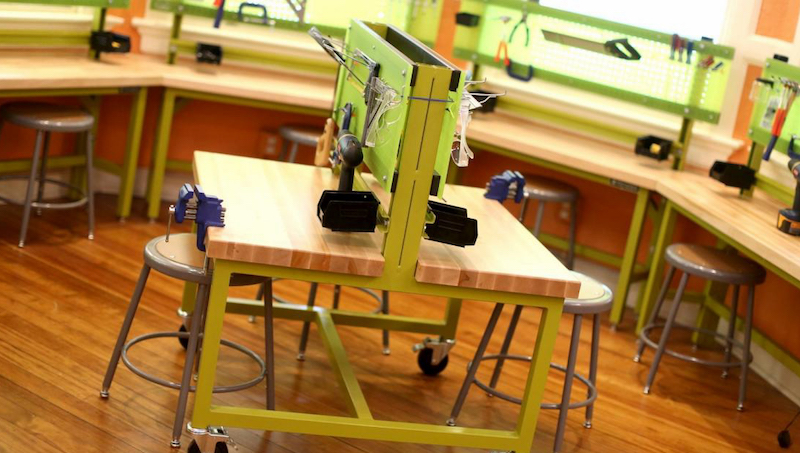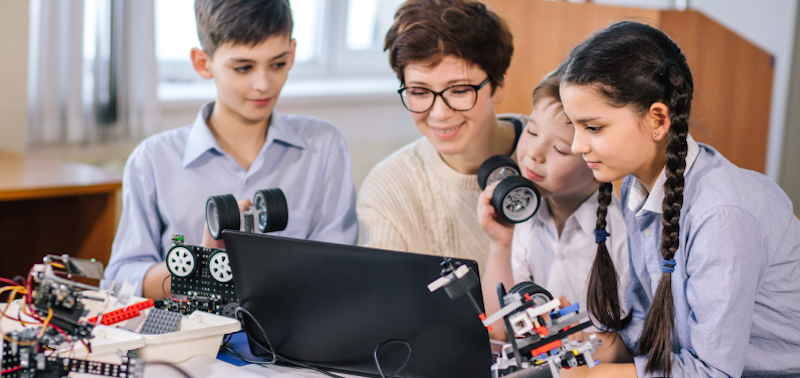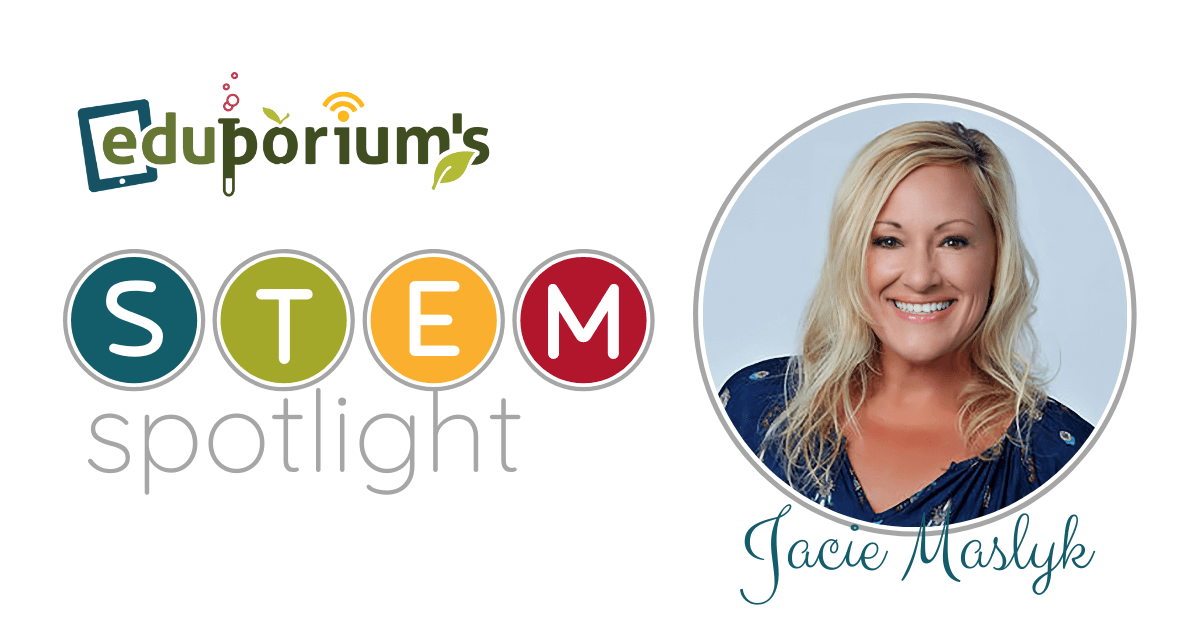Our STEM Spotlight series is continuing today with a feature on Jacie Maslyk. Jacie is an author, consultant, and speaker from Pittsburgh, PA who's done a lot to contribute to the betterment of STEM education. Whether it's been creating PD resources for teachers or designing hands-on, engaging STEM lessons for students, she's certainly helped extend the reach and impact of various initiatives. From helping students build literacy skills to empowering them to develop additional 21st century literacies, it's certainly been inspiring for us to share some of the ways in which members of the education community are serving students. Sit back and enjoy learning more about what Jacie has done in this latest STEM Spotlight!
1. What inspired you to get into the STEM education field?
I’ve been interested in science and creative thinking my entire life, but I’ve been involved in STEM education in public schools for the last 12 years. As someone who didn’t always connect with the “traditional school model," I know how important it is. It's one of the most prominent things that gives students time and space to design, build, tinker, and discover. When educators create these opportunities in schools, libraries, and communities, young people thrive.
I started a STEAM makerspace when I was the principal of an elementary school about 10 years ago. We had an empty classroom and an opportunity to reimagine what might happen there. We created the space to help foster hands-on learning and creative thinking that centers on science, technology, engineering, art, and math. What continued to inspire me was how so many people within our school community took that opportunity to expand on the STEM and STEAM projects students were doing in the makerspace and try to bring those elements into every standard classroom as well. I watched as students who were on the fringe found their place. They had access to new and innovative tools and materials and were encouraged to use their talents to learn.
2. If you were designing the ideal STEM space, what are the three must-have items that you would need to include?
Choosing only three is really tough! The space needs to have bright, inviting colors. I think this lets kids know that something fun is happening there. So, as simple as that may sound, paint is important. Innovative learning spaces also need flexible furniture. Portable stools help enable students to have collaborative conversations and furniture on wheels allows learners to interact within the space, using it to meet their needs—not the other way around. Lastly, I would say the ideal STEM space would have creative storage spots for lots of different learning materials. STEAM labs and makerspaces are much more organized when they have built-in storage space for small materials like nails, beads, and LEGOs. You also typically need larger storage options for cardboard boxes and bins for things like robotics materials and art supplies.

3. How do you see the skills students learn from STEM and EdTech experiences applied in other subject areas?
When students engage in STEM, especially when using EdTech tools, they're thinking creatively and solving problems—skills they can later apply in just about any subject. As young people learn how to generate solutions, make decisions, and fail forward in their learning, they will build skills that will benefit them in the science lab, a social studies class, the art room, and the media center. STEM skills are transferable to any learning experience!
4. Based on your knowledge/experience, what are some of the most in-demand skills today’s students should be developing?
Educators should focus on helping students develop skills and dispositions that will benefit them now and into the future. Soft skills like communication, collaboration, and critical thinking, in particular, are imperative. We also need to help them develop learning dispositions like the ability to think flexibly about problems, understanding how they can foster their creativity, and recognizing the importance of persevering in the face of challenges. Students build these skills in classrooms through open-ended learning opportunities that help them to figure out answers in creative ways.
5. Do you think—on average—they have access to learning that effectively helps them build these skills?
Many classroom teachers and librarians across the globe have embraced the hands-on nature of STEM learning and have found ways to increase student access to tools and materials that advance their learning. In many of the schools I've worked at, they're actively developing learning experiences that help students to build these critical skills and dispositions. School leaders and teachers who want to prepare their students for the future will embed this type of learning into their classrooms.

6. Do you have any thoughts on how STEM tools could help kids build a strong SEL foundation?
STEM and SEL align in a lot of ways. I have been working with educators from several schools on strategies for strengthening both SEL and STEM through hands-on, collaborative challenges. When students collaborate, they are building communication and leadership skills. They are also navigating relationships and making decisions, which are key SEL skills as well as STEM skills. I think STEM also has a way of really helping students develop social awareness (one of CASEL’s five SEL competencies). When students engage in problem solving and design, they are developing empathy and understanding of others. When we connect that to important content, like the UN’s Sustainable Development Goals (SDGs), we can introduce students to global issues, like ensuring access to clean water, food insecurity, and sustainable energy, which are all extremely relevant to STEM.
7. What are some of the strategies you know to be successful in helping students develop Future-Ready skills?
I love using engineering design challenges as a way to help students boost Future-Ready skills. Providing them with challenges and watching them devise innovative solutions is what learning is all about. Design challenges give students the opportunity to brainstorm solutions, collaborate on different ideas, and use various materials to create a prototype. I love seeing what they come up with!
8. Based on industry knowledge, what are some trends you see becoming more prominent in STEM education?
I think that AR and VR are each continuing to grow in interesting ways. Teachers are building knowledge in this area and finding meaningful ways to infuse these technologies into their classroom content. Coding and drones will also continue to be very relevant in various industries. I also think sustainability topics will grow in importance as we continue to search for innovative solutions to problems around the globe pertaining to clean energy and water, conservation, and climate.
We'd like to thank Jacie for sharing her thoughts and experiences with us and our STEM community. We hope she's inspired other educators to try new things in their classroom or makerspace and to continue following this series! If you know of anyone who deserves to be highlighted in a similar way for contributions to STEM education inside or outside the classroom, please get in touch with us. For more STEM content and helpful educator resources, follow us on Twitter and Instagram!



